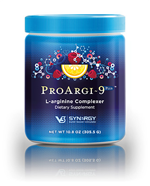 Atherosclerosis involves the calcification of your vascular tissue. Osteoporosis involves the decalcification of bone tissue. Could there be a link between the two?
Atherosclerosis involves the calcification of your vascular tissue. Osteoporosis involves the decalcification of bone tissue. Could there be a link between the two?
Here is a medical fact that few physicians know and even fewer in the general population have ever heard about. As you age your endothelial cells, which line all of your cardiovascular system, can turn into bone cells. They are known as osteoblasts and they normally regulate bone formation.
This discovery was originally made in 1993. Since this discovery research has shown a link between atherosclerosis and osteoporosis. Those with atherosclerosis typically also have weaker, more brittle bone with an increased risk for fracture. Those with osteoporosis typically exhibit hardening of the arteries or atherosclerotic calcification leading to atherosclerosis.
To date the precise biological mechanisms behind the transformation of endothelial cells into osteoblasts, or bone-forming cells, is not fully understood. What is understood is the key role Vitamins D and K play in ensuring that calcium is properly used in bone formation while at the same time preventing the pathological calcification of your arteries.
These two nutrients operate synergistically to combat osteoporosis and atherosclerosis.
Vitamin D and Its Role in Atherosclerosis!
Most people know about the role Vitamin D plays in healthy bone structure and function. What most people do not know is how important Vitamin D is to cardiovascular health. Here is a short list:
- Vitamin D inhibits vascular calcification, which can lead to atherosclerosis.
- Vitamin D deficiencies are associated with hypertension, diabetes, increased thickness of the carotid artery, heart attack, and stroke.
- Below normal levels of vitamin D is also implicated in congestive heart failure.
We’ll examine the function of Vitamin D and cardiovascular health in a future article.
Vitamin K and Its Role in Atherosclerosis!
Most people have never heard of Vitamin K yet it plays a critical role in stimulating new bone formation. Without the proper amount of Vitamin K in your system, your body cannot properly bind calcium and phosphorus to form the matrix necessary to produce and maintain solid, well-mineralized bone.
While the presence of Vitamin K is critical for bone formation, it is also necessary to protect against the calcification of the vascular system.
We’ll examine this function of Vitamin K and cardiovascular health in a future article.
Atherosclerosis and Osteoporosis!
Two age-related diseases are atherosclerosis and osteoporosis. While there are many contributing factors to the progression of each of these two diseases, medical science has now been able to establish a direct link between them. That direct link points to deficiencies of both Vitamin D and Vitamin K. Research has clearly shown that these two vitamins work synergistically to facilitate bone mineralization leading to strong and healthy bones. At the same time they work synergistically to prevent calcium deposits from accumulating in your vascular system leading to atherosclerosis.
Together we can work to save a million lives!
Dan Hammer
Dan Hammer has a background in biology, chemistry, and exercise physiology. He used to run one of the largest health club operations in the Chicagoland area and has been helping people with their wellness issues for more than 25 years.



